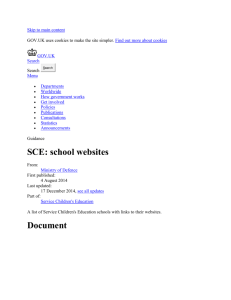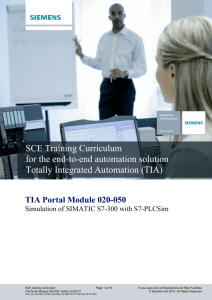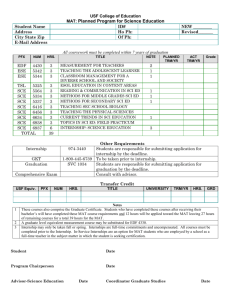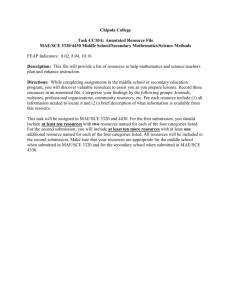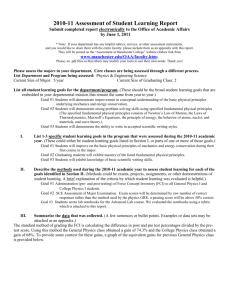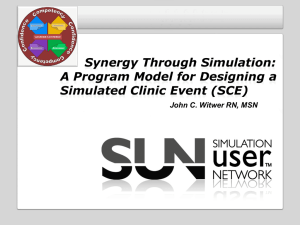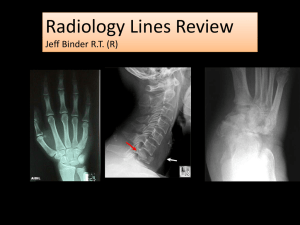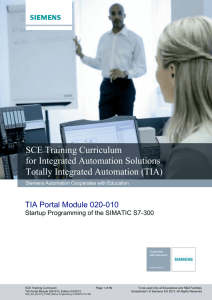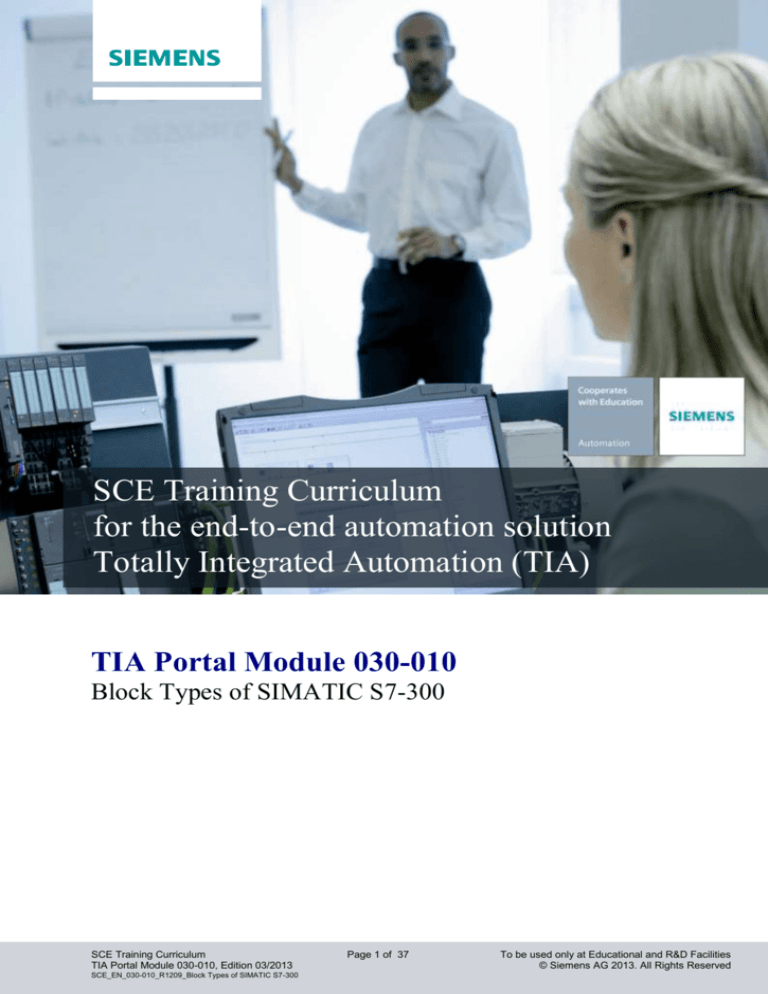
Industry Sector, IA&DT
SCE Training Curriculum
for the end-to-end automation solution
Totally Integrated Automation (TIA)
TIA Portal Module 030-010
Block Types of SIMATIC S7-300
SCE Training Curriculum
TIA Portal Module 030-010, Edition 03/2013
SCE_EN_030-010_R1209_Block Types of SIMATIC S7-300
Page 1 of 37
To be used only at Educational and R&D Facilities
© Siemens AG 2013. All Rights Reserved
Industry Sector, IA&DT
Suitable SCE trainer packages for these documents
SIMATIC controllers
SIMATIC S7-300 with CPU 314C-2PN/DP
Order no.: 6ES7314-6EH04-4AB3
SIMATIC S7-300 with CPU 314C-2PN/DP (upgrade)
Order no.: 6ES7314-6EH04-4AB4
SIMATIC S7-300 with CPU 315F-2PN/DP
Order no.: ES7315-2FH14-4AB1
SIMATIC ET 200S with CPU IM151-8 F PN/DP
Order no.: 6ES7151-8FB00-4AB1
SIMATIC STEP 7 software for training
SIMATIC STEP 7 Professional V11 - Single license
Order no.: 6ES7822-1CC01-4YA5
SIMATIC STEP 7 Professional V11 - Classroom license (up to 12 users)
Order no.: 6ES7822-1AA01-4YA5
SIMATIC STEP 7 Professional V11 - Upgrade license (up to 12 users)
Order no.: 6ES7822-1AA01-4YE5
SIMATIC STEP 7 Professional V11 - Student license (up to 20 users)
Order no.: 6ES7822-1AC01-4YA5
Please note that these trainer packages may be replaced by successor trainer packages.
An overview of the currently available SCE packages is provided under: siemens.com/sce/tp
Advanced training
Please get in touch with your regional SCE contact for information on regional Siemens SCE advanced training
siemens.com/sce/contact
Additional information regarding SCE
siemens.com/sce
Information regarding usage
This training curriculum for the end-to-end automation solution Totally Integrated Automation (TIA) was prepared
for the program “Siemens Automation Cooperates with Education (SCE)” specifically for training purposes for
public educational facilities and R&D facilities. Siemens AG does not make any guarantee regarding its contents.
This training curriculum may only be used for initial training on Siemens products/systems. That is, it may be
copied in whole or in part and handed out to trainees for use within the context of their training. Distribution and
reproduction of this document and disclosure of its contents are permitted within public education and further
education facilities for educational purposes.
Any exceptions require written consent from the Siemens AG contact person: Mr. Roland Scheuerer
roland.scheuerer@siemens.com.
Offenders will be liable for damages. All rights reserved, including those relating to translation and in particular
those rights created as a result of a patent being granted or utility model being registered.
Use for industry customers is expressly prohibited. We do not consent to any commercial use of the training
curriculum.
We would like to thank Michael Dziallas Engineering and all those involved for their support in creating this
training curriculum.
SCE Training Curriculum
TIA Portal Module 030-010, Edition 03/2013
SCE_EN_030-010_R1209_Block Types of SIMATIC S7-300
Page 2 of 37
To be used only at Educational and R&D Facilities
© Siemens AG 2013. All Rights Reserved
Industry Sector, IA&DT
PAGE:
1.
2.
2.1
Preface ....................................................................................................................................................... 4
Notes on programming for SIMATIC S7-300 ............................................................................................. 6
SIMATIC S7-300 automation system ......................................................................................................... 6
2.2
STEP 7 Professional V11 (TIA Portal V11) programming software ........................................................... 6
3.1
Block types for SIMATIC S7-300 ................................................................................................................ 7
Linear programming ................................................................................................................................... 7
3.2
Structured programming ............................................................................................................................. 8
3.
3.2. User blocks for SIMATIC S7-300 ............................................................................................................... 9
4.
5.
3.2.1
Organization blocks ......................................................................................................................... 10
3.2.2
Functions ......................................................................................................................................... 11
3.2.3
Function blocks ................................................................................................................................ 11
3.2.4
Data blocks ...................................................................................................................................... 12
Example task: Function block for belt control ........................................................................................... 13
Programming of the belt control for SIMATIC S7-300 .............................................................................. 14
SCE Training Curriculum
TIA Portal Module 030-010, Edition 03/2013
SCE_EN_030-010_R1209_Block Types of SIMATIC S7-300
Page 3 of 37
To be used only at Educational and R&D Facilities
© Siemens AG 2013. All Rights Reserved
Industry Sector, IA&DT
1.
Preface
The SCE_EN_030-010 module contents form part of the ‘Advanced functions for PLC programming’
training unit and explain the various blocks that can be used for SIMATIC S7 programming.
Basics of PLC
programming
Module 10, Module 20
Plant simulation with
SIMIT Module 150
Advanced functions for
PLC programming
Module 30
Other programming
languages
Module 40
Safety technology
Module 80
PROFIBUS
Module 60
PROFINET
Module 70
Sensor technology
Module 110
AS-Interface
Module 50
Process visualization
(HMI) Module 90
Drive technology
Module 100
Learning objective:
In this module, the reader will become acquainted with the various blocks for SIMATIC S7 programming
with the TIA Portal programming tool. This module explains the various block types and describes the
procedure for creating a program in a function block in the steps outlined below.
Creating a function block
Defining internal tags
Programming using internal tags in the function block
Opening and assigning parameters to the function block in OB1
Requirements:
To successfully work through this module, the following knowledge is required:
Proficiency in working with Windows
Basic knowledge of PLC programming with the TIA Portal (e.g., module SCE_EN_020010_R1110_Startup programming with SIMATIC S7-300)
SCE Training Curriculum
TIA Portal Module 030-010, Edition 03/2013
SCE_EN_030-010_R1209_Block Types of SIMATIC S7-300
Page 4 of 37
To be used only at Educational and R&D Facilities
© Siemens AG 2013. All Rights Reserved
Industry Sector, IA&DT
Required hardware and software
1
PC Pentium 4, 1.7 GHz 1 (XP) – 2 (Vista) GB RAM, approx. 2 GB of free hard disk space
Operating system Windows XP Professional SP3 / Windows 7 Professional / Windows 7
Enterprise / Windows 7 Ultimate / Windows 2003 Server R2 / Windows Server 2008 Premium SP1,
Business SP1, Ultimate SP1
2
Software: STEP 7 Professional V11 (Totally Integrated Automation (TIA) Portal V11)
3
Ethernet connection between the PC and CPU 315F-2 PN/DP
4
SIMATIC S7-300 PLC, e.g., CPU 315F-2PN/DP with 16DI/16DO signal module. The inputs must be
fed out to a control panel.
2 STEP 7 Professional
V11 (TIA Portal)
1 PC
3 Ethernet connection
4 S7-300 with
CPU 315F 2 PN/DP
SCE Training Curriculum
TIA Portal Module 030-010, Edition 03/2013
SCE_EN_030-010_R1209_Block Types of SIMATIC S7-300
Page 5 of 37
To be used only at Educational and R&D Facilities
© Siemens AG 2013. All Rights Reserved
Industry Sector, IA&DT
2.
Notes on programming for SIMATIC S7-300
2.1
SIMATIC S7-300 automation system
The SIMATIC S7-300 automation system is a modular microcontroller system for the low and medium
performance range. A comprehensive range of modules is available to optimally adapt the system to the
automation task.
The S7 controller consists of a power supply, a CPU, and input and output modules for digital and
analog signals. If necessary, communication processors and function modules are also used for special
tasks such as stepper motor control.
The programmable logic controller (PLC) monitors and controls a machine or a process using the S7
program. The S7 program scans the I/O modules via input addresses (%I) and addresses their output
addresses (%Q).
The system is programmed with the STEP 7 software.
2.2
STEP 7 Professional V11 (TIA Portal V11) programming software
The STEP 7 Professional V11 (TIA Portal V11) software is the programming tool for the following
automation systems:
-
SIMATIC S7-1200
-
SIMATIC S7-300
-
SIMATIC S7-400
-
SIMATIC WinAC
STEP 7 Professional V11 provides the following functions for plant automation:
-
Configuration and parameter assignment of the hardware
-
Specification of the communication
-
Programming
-
Testing, commissioning, and servicing with operational/diagnostic functions
-
Documentation
-
Creation of visualizations for the SIMATIC Basic Panels using the integrated WinCC Basic
software.
-
Visualization solutions for PCs and other panels can also be created with other WinCC software
packages
Support is provided for all functions in a comprehensive online help system.
SCE Training Curriculum
TIA Portal Module 030-010, Edition 03/2013
SCE_EN_030-010_R1209_Block Types of SIMATIC S7-300
Page 6 of 37
To be used only at Educational and R&D Facilities
© Siemens AG 2013. All Rights Reserved
Industry Sector, IA&DT
3.
Block types for SIMATIC S7-300
The program for SIMATIC S7-300 is written in so-called blocks. The Main [OB1] organization block is
already included as standard.
This block represents the interface to the operating system of the CPU and is automatically called
and cyclically processed by this operating system.
For extensive control tasks, the program is divided into small, manageable program blocks sorted
according to functions.
These blocks are then called from organization blocks. At the block end, the program jumps back to
the calling organization block - specifically, to the line directly after the call.
3.1
Linear programming
With linear programming, the instructions are stored in a block and processed in the order in which
they are stored in the program memory. When the program end (block end) is reached, the program
execution starts over from the beginning.
This is called cyclic processing. The time required by a device to process all instructions once is
called the cycle time. Linear program processing is used only for simple, less extensive controllers
and can be implemented in a single OB.
,
OB1
Instruction 1
Instruction 2
Instruction 3
Block end
SCE Training Curriculum
TIA Portal Module 030-010, Edition 03/2013
SCE_EN_030-010_R1209_Block Types of SIMATIC S7-300
Page 7 of 37
To be used only at Educational and R&D Facilities
© Siemens AG 2013. All Rights Reserved
Industry Sector, IA&DT
3.2
Structured programming
For extensive control tasks, the program is divided into small, manageable program blocks sorted
according to functions. The advantage of this approach is that it is possible to individually test
program sections and to combine them once they have been found to work properly in order to
produce an overall function.
The program blocks must be called from the higher-level block. If the block end (BE) has been
detected, the execution of the program continues in the calling block in the line after the call.
Global DB for
all
FBs
FCs
OBs
BE
Instance DB
Local data
only FB1
BE
OB = Organization block
FB = Function block
FC = Function
DB = Data block
BE
SCE Training Curriculum
TIA Portal Module 030-010, Edition 03/2013
SCE_EN_030-010_R1209_Block Types of SIMATIC S7-300
Page 8 of 37
To be used only at Educational and R&D Facilities
© Siemens AG 2013. All Rights Reserved
Industry Sector, IA&DT
3.2.
User blocks for SIMATIC S7-300
The following user blocks are available for structured programming:
OB (Organization block):
An OB is called cyclically by the operating system and thus forms the interface between the user
program and the operating system. In this OB, block call commands are used to inform the PLC's
sequence control which program blocks it is to process.
FB (function block):
The FB requires an assigned memory area for each call (instance). When an FB is called, a data
block (DB) can be assigned to it as an instance DB, for example.
The data in this instance DB is then accessed using the tags of the FB.
Various memory areas must be assigned to an FB if it will be called multiple times.
It is also possible to call other FBs and FCs within a function block.
FC (function):
A function does not have an assigned memory area. The local data of a function is lost after the
function is processed.
It is also possible to call other FBs and FCs within a function.
DB (data block):
DBs are used to provide memory space for data tags. There are two types of data blocks. Global DBs
where all OBs, FBs, and FCs can read the saved data and themselves write data to the DB, and
instance DBs that are assigned to a particular FB.
Note:
If only internal tags were used when programming FCs and FBs, these can be used
multiple times in the form of standard blocks. They can then be called as many times as
required, whereby a memory area – a so-called instance (e.g., a DB) – must be
assigned to the FBs for each call.
SCE Training Curriculum
TIA Portal Module 030-010, Edition 03/2013
SCE_EN_030-010_R1209_Block Types of SIMATIC S7-300
Page 9 of 37
To be used only at Educational and R&D Facilities
© Siemens AG 2013. All Rights Reserved
Industry Sector, IA&DT
3.2.1 Organization blocks
Organization blocks (OBs) form the interface between the operating system and the user program.
They are called from the operating system and control the following operations:
Startup characteristics of the automation system
Cyclic program execution
Interrupt-driven program execution
Error handling
You can program the organization blocks as you wish and thus determine the behavior of the CPU.
Various options are available for using organization blocks in your program:
Startup OB, cycle OB, time error OB, and diagnostics OB:
It is easy to insert and program these organization blocks in your project. You do not have to call or
assign parameters to these organization blocks.
Hardware interrupt OB and cyclic interrupt OB:
After these organization blocks have been inserted into your program, you need to assign parameters
to them. Hardware interrupt OBs can also be attached to an event during run time using the ATTACH
instruction or detached again using DETACH.
Time-delay interrupt OB:
You can insert and program the time-delay interrupt OB in your project. You must additionally call it in
the user program using the SRT_DINT instruction. Parameter assignment is not necessary.
Start information
At the start of some organization blocks, the operating system outputs information that can be
evaluated in the user program.
This can be very helpful for error diagnostics, in particular.
The descriptions of the organization blocks contain information on whether information is output and,
if so, what information.
SCE Training Curriculum
TIA Portal Module 030-010, Edition 03/2013
SCE_EN_030-010_R1209_Block Types of SIMATIC S7-300
Page 10 of 37
To be used only at Educational and R&D Facilities
© Siemens AG 2013. All Rights Reserved
Industry Sector, IA&DT
3.2.2 Functions
A function contains a program that is executed whenever the function is called from another code
block.
Functions (FCs) are code blocks without memory. After the function has been processed, the data in
the temporary tags is lost. Functions can use global data blocks in order to save data permanently.
Functions can be used, for example, for the following purposes:
To return function values to the calling block, e.g., for mathematical functions
To execute technological functions, e.g., individual controls using binary logic
A function can also be called several times at different points in a program. This facilitates the
programming of frequently recurring complex functions.
3.2.3 Function blocks
Function blocks contain subroutines that are executed whenever a function block is called by another
code block.
Function blocks are code blocks that store their values permanently in instance data blocks, so that
they remain available even after the block has been processed.
They store their input, output, and in/out parameters permanently in instance data blocks.
Consequently, these parameters are still available after the block has been processed. For this
reason, they are also referred to as blocks with "memory".
Function blocks are used for tasks that cannot be implemented with functions:
In all cases when timers and counters are required in the blocks (see M3 module)
In all cases when information must be saved in the program. For example: preselection of the
operating mode with a button.
A function block can also be called several times at different points in a program. This facilitates the
programming of frequently recurring complex functions.
Instances of function blocks
A call of a function block is referred to as an instance. Each instance of a function block is assigned a
memory area that contains the data that the function block uses. This memory is made available by
data blocks created automatically by the software. It is also possible to provide memory for multiple
instances in a data block in the form of a multi-instance.
SCE Training Curriculum
TIA Portal Module 030-010, Edition 03/2013
SCE_EN_030-010_R1209_Block Types of SIMATIC S7-300
Page 11 of 37
To be used only at Educational and R&D Facilities
© Siemens AG 2013. All Rights Reserved
Industry Sector, IA&DT
3.2.4 Data blocks
In contrast to code blocks, data blocks contain no instructions. Rather, they serve as memory for user
data.
Data blocks thus contain variable data used by the user program.
Global data blocks store data that can be used by all other blocks.
The maximum size of data blocks varies depending on the CPU. You can define the structure of
global data blocks as required.
Application examples are:
Saving of information about a storage system. “Which product is located where?”
Saving of recipes for particular products.
Every function block, every function, and every organization block can read the data from a global
data block or write data to a global data block. This data is retained in the data block, even when the
data block is exited.
The call of a function block is referred to as an instance. An instance data block is assigned to every
call of a function block that transfers parameters. This instance data block serves as a data memory.
It stores the actual parameters and the static data of the function block.
The maximum size of instance data blocks varies depending on the CPU. The tags declared in the
function block determine the structure of the instance data block.
A global data block and an instance data block can be open at the same time.
SCE Training Curriculum
TIA Portal Module 030-010, Edition 03/2013
SCE_EN_030-010_R1209_Block Types of SIMATIC S7-300
Page 12 of 37
To be used only at Educational and R&D Facilities
© Siemens AG 2013. All Rights Reserved
Industry Sector, IA&DT
4.
Example task: Function block for belt control
When blocks that will function as a sort of "black box" in any program are to be created, they must be
programmed using tags. The following rule applies: absolutely addressed inputs/outputs, bit memory,
etc. are not permitted to be used in these blocks. Only tags and constants may be used within the
block.
In the following example, a function block with tag declaration containing a mode-dependent belt
control system is to be created.
In this case, the ‘S1’ button will enable selection of ‘manual’ mode and the ‘S2’ button will enable
selection of ‘automatic’ mode.
In ‘manual’ mode, the motor will be switched on as long as the ‘S3’ button is actuated, during which
time the ‘S4’ button must not be actuated.
In ‘Automatic’ mode, the ‘S3’ button will switch on the belt motor and the ‘S4’ button (NC) will switch
off the belt motor.
Assignment list:
Address
Symbol
Comment
%I 0.0
%I 0.1
%I 0.2
%I 0.3
%Q 0.2
S1
S2
S3
S4
M01
Button operation mode manual S1 (NO)
Button operation mode automatic S2 (NO)
ON button S3 (NO)
OFF button S4 (NC)
Belt motor M01
Note: Here, the OFF button S4 is implemented as a normally closed contact in order to ensure wire
break protection. This means that the plant will stop automatically in the event of a wire break at this
button. Otherwise, it would no longer be possible to stop the plant in the event of a wire break. For
this reason, all STOP buttons, OFF buttons, and switches must always be implemented as normally
closed contacts in the control technology.
SCE Training Curriculum
TIA Portal Module 030-010, Edition 03/2013
SCE_EN_030-010_R1209_Block Types of SIMATIC S7-300
Page 13 of 37
To be used only at Educational and R&D Facilities
© Siemens AG 2013. All Rights Reserved
Industry Sector, IA&DT
5.
Programming of the belt control for SIMATIC S7-300
The ‘Totally Integrated Automation Portal’ software is used for project management and
programming.
Components such as control, visualization, and networking of the automation solution are created,
assigned parameters, and programmed here using a standard interface.
Online tools are available for the error diagnostics.
The following steps enable you to create a project for the SIMATIC S7-300 and to program the
solution for the task:
1.
The central tool is the ‘Totally Integrated Automation Portal’, which is opened here with a
double-click. ( TIA Portal V11)
SCE Training Curriculum
TIA Portal Module 030-010, Edition 03/2013
SCE_EN_030-010_R1209_Block Types of SIMATIC S7-300
Page 14 of 37
To be used only at Educational and R&D Facilities
© Siemens AG 2013. All Rights Reserved
Industry Sector, IA&DT
2.
Programs for the SIMATIC S7-300 are managed in projects. Start by creating a project in the
portal view ( Create new project FB_Band Create).
SCE Training Curriculum
TIA Portal Module 030-010, Edition 03/2013
SCE_EN_030-010_R1209_Block Types of SIMATIC S7-300
Page 15 of 37
To be used only at Educational and R&D Facilities
© Siemens AG 2013. All Rights Reserved
Industry Sector, IA&DT
3.
‘First steps’ for configuring are now suggested. We want to start with ‘Configure a device’.
( First steps Configure a device)
SCE Training Curriculum
TIA Portal Module 030-010, Edition 03/2013
SCE_EN_030-010_R1209_Block Types of SIMATIC S7-300
Page 16 of 37
To be used only at Educational and R&D Facilities
© Siemens AG 2013. All Rights Reserved
Industry Sector, IA&DT
4.
The next step is to ‘Add new device’ with device name ‘Program_belt’. Choose the
‘CPU 315F-2 PN/DP’ with the appropriate order number from the catalog.
( Add new device Program_belt CPU 315F-2 PN/DP 6ES7 ……. Add)
SCE Training Curriculum
TIA Portal Module 030-010, Edition 03/2013
SCE_EN_030-010_R1209_Block Types of SIMATIC S7-300
Page 17 of 37
To be used only at Educational and R&D Facilities
© Siemens AG 2013. All Rights Reserved
Industry Sector, IA&DT
5.
The software now switches automatically to the project view containing the opened hardware
configuration. Additional modules can now be added from the hardware catalog (on the right!)
and the addresses of the inputs/outputs can be set in the ‘Device overview’. Here, there is one
I/O module with 16 inputs (addresses %I0.0 - %I1.7) and 16 outputs (addresses %Q0.0 %Q1.7). ( Device overview DI/DO DI16/DO16 x 24V/0.5A 6ES7 323-1BL00-0AA0 I
address: 0…1 Q address: 0…1)
SCE Training Curriculum
TIA Portal Module 030-010, Edition 03/2013
SCE_EN_030-010_R1209_Block Types of SIMATIC S7-300
Page 18 of 37
To be used only at Educational and R&D Facilities
© Siemens AG 2013. All Rights Reserved
Industry Sector, IA&DT
6.
To ensure that the software will access the correct CPU later, the IP address and the subnet
mask of the CPU must be set. ( Properties General PROFINET interface [X2]
Ethernet addresses IP protocol IP address: 192.168.0.1 Subnet mask: 255.255.255.0)
(see also: SCE_EN_030-010 module on setting the programming interface.)
SCE Training Curriculum
TIA Portal Module 030-010, Edition 03/2013
SCE_EN_030-010_R1209_Block Types of SIMATIC S7-300
Page 19 of 37
To be used only at Educational and R&D Facilities
© Siemens AG 2013. All Rights Reserved
Industry Sector, IA&DT
7.
Because modern programming uses tags and not absolute addresses, the global PLC tags
must be defined here.
These global PLC tags are descriptive names with a comment for each input and output used in
the program. The global PLC tags can then be accessed later during programming via their
names. These global tags can be used in all blocks anywhere in the program.
In the project tree, select ‘Program_belt [CPU 315F-2 PN/DP]’ and then ‘PLC tags’. Doubleclick to open the ‘PLC tags’ table and enter the names for the inputs and outputs as shown
below. ( Program_belt [CPU315F-2 PN/DP] PLC tags PLC tags)
SCE Training Curriculum
TIA Portal Module 030-010, Edition 03/2013
SCE_EN_030-010_R1209_Block Types of SIMATIC S7-300
Page 20 of 37
To be used only at Educational and R&D Facilities
© Siemens AG 2013. All Rights Reserved
Industry Sector, IA&DT
8.
To create function block FB1, select ‘Program_belt [CPU 315F-2 PN/DP]’ and then ‘Program
blocks’ in the project tree. Then, double-click ‘Add new block’. ( Program_belt [CPU315F-2
PN/DP] Program blocks Add new block)
SCE Training Curriculum
TIA Portal Module 030-010, Edition 03/2013
SCE_EN_030-010_R1209_Block Types of SIMATIC S7-300
Page 21 of 37
To be used only at Educational and R&D Facilities
© Siemens AG 2013. All Rights Reserved
Industry Sector, IA&DT
9.
Select ‘Function block (FB)’ and assign the name ‘Belt’. Specify the ‘FBD’ function block
diagram as programming language. The numbering will be automatic. Since this FB1 will be
called using its symbolic name later, the number does not play an important role in any case.
Click ‘OK’ to accept your entries.
( Function block (FB1) Belt FBD OK)
SCE Training Curriculum
TIA Portal Module 030-010, Edition 03/2013
SCE_EN_030-010_R1209_Block Types of SIMATIC S7-300
Page 22 of 37
To be used only at Educational and R&D Facilities
© Siemens AG 2013. All Rights Reserved
Industry Sector, IA&DT
10. The ‘Belt [FB1]’ block is then opened automatically. The interface of the block must be declared
before the program can be written.
In the interface declaration, the local tags known only in this block are defined.
The tags are divided into two groups:
Block parameters that form the block interface for the call in the program.
Type
Designation
Function
Available in
Input parameters
Input
Parameters whose values are
read by the block.
Functions, function blocks, and some
types of organization blocks
Output parameters
Output
Parameters whose values are
written by the block.
Functions and function blocks
InOut
A parameter whose value is read
by the block when it is called and
is written back by the block to
Functions and function blocks
the same parameter after it is
processed.
In/out parameters
Local data that is used for saving intermediate results.
Type
Temporary local data
Static local data
Designation
Function
Available in
Temp
Tags that are used to store
temporary intermediate results.
Temporary data is retained for
only one cycle.
Functions, function blocks, and
organization blocks
Static
Tags that are used for saving
static intermediate results in the
instance data block. Static data
is retained until it is overwritten, Function blocks
which may be after several
cycles.
SCE Training Curriculum
TIA Portal Module 030-010, Edition 03/2013
SCE_EN_030-010_R1209_Block Types of SIMATIC S7-300
Page 23 of 37
To be used only at Educational and R&D Facilities
© Siemens AG 2013. All Rights Reserved
Industry Sector, IA&DT
11. The following tags are required in our example for declaration of the local tags.
Input:
man
auto
ON
OFF
The button for manual mode selection is read in here (normally open)
The button for automatic mode selection is read in here (normally open)
The ON button is read in here (normally open)
The OFF button is read in here (normally closed)
Output:
motor
Here, a state is written to the belt motor output
Static (only available in function blocks FB):
automan
The preselected operating mode is saved here
motorauto
If the belt motor was started in automatic mode, this is saved here.
In this case, all of the tags are ‘Bool’ type tags. That is, they are binary tags that can only have the
state ‘0’ (false) or ‘1’ (true).
The important thing in this example is that the state must be saved for an extended period of time in
both the ‘automan’ and ‘motorauto’ tags. For this reason, the ‘Static’ tag type must be used here.
This tag type is also only available in a function block FB.
All local tags should also be provided with a sufficiently descriptive comment for better
understanding.
SCE Training Curriculum
TIA Portal Module 030-010, Edition 03/2013
SCE_EN_030-010_R1209_Block Types of SIMATIC S7-300
Page 24 of 37
To be used only at Educational and R&D Facilities
© Siemens AG 2013. All Rights Reserved
Industry Sector, IA&DT
12. Once the local tags have been declared, the program can be entered using the tag names.
(Tags are marked by the ‘#’ symbol.) This could appear as follows for our FBD example.
SCE Training Curriculum
TIA Portal Module 030-010, Edition 03/2013
SCE_EN_030-010_R1209_Block Types of SIMATIC S7-300
Page 25 of 37
To be used only at Educational and R&D Facilities
© Siemens AG 2013. All Rights Reserved
Industry Sector, IA&DT
13. The next step is to select the ‘Properties’ of the cyclically processed ‘Main [OB1]’ block.
Properties of the blocks can be changed. ( Main [OB1] Properties)
SCE Training Curriculum
TIA Portal Module 030-010, Edition 03/2013
SCE_EN_030-010_R1209_Block Types of SIMATIC S7-300
Page 26 of 37
To be used only at Educational and R&D Facilities
© Siemens AG 2013. All Rights Reserved
Industry Sector, IA&DT
14. For the ‘Language’, choose the ‘FBD’ function block diagram programming language. ( FBD
OK)
SCE Training Curriculum
TIA Portal Module 030-010, Edition 03/2013
SCE_EN_030-010_R1209_Block Types of SIMATIC S7-300
Page 27 of 37
To be used only at Educational and R&D Facilities
© Siemens AG 2013. All Rights Reserved
Industry Sector, IA&DT
15. The “Belt” block must now be called from the Main [OB1] program block. Otherwise, the block
would not be processed at all. Double-click ‘Main [OB1]’ to open this block. ( Main [OB1])
SCE Training Curriculum
TIA Portal Module 030-010, Edition 03/2013
SCE_EN_030-010_R1209_Block Types of SIMATIC S7-300
Page 28 of 37
To be used only at Educational and R&D Facilities
© Siemens AG 2013. All Rights Reserved
Industry Sector, IA&DT
16. The “Belt [FB1]” block can then be moved to Network 1 of the Main [OB1] block using a dragand-drop operation. Don't forget to document the networks in the Main [OB1] block. ( Belt
[FB1])
SCE Training Curriculum
TIA Portal Module 030-010, Edition 03/2013
SCE_EN_030-010_R1209_Block Types of SIMATIC S7-300
Page 29 of 37
To be used only at Educational and R&D Facilities
© Siemens AG 2013. All Rights Reserved
Industry Sector, IA&DT
17. Because we are dealing with a function block here, memory must be provided for it. Data blocks
are available as memory in the SIMATIC S7-300. A data block assigned in this way is called an
instance data block. The specification and creation of this instance data block will be
‘Automatic’ here. ( Automatic OK)
Note: You will find other examples for working with and creating instances in the SCE_EN_030-020
module.
SCE Training Curriculum
TIA Portal Module 030-010, Edition 03/2013
SCE_EN_030-010_R1209_Block Types of SIMATIC S7-300
Page 30 of 37
To be used only at Educational and R&D Facilities
© Siemens AG 2013. All Rights Reserved
Industry Sector, IA&DT
18. Now, interconnect the input tags and the output tag with the PLC tags shown here in OB1. Then,
to save the project. ( “S1” “S2” “S3” “S4” “M01”
click
)
SCE Training Curriculum
TIA Portal Module 030-010, Edition 03/2013
SCE_EN_030-010_R1209_Block Types of SIMATIC S7-300
Page 31 of 37
To be used only at Educational and R&D Facilities
© Siemens AG 2013. All Rights Reserved
Industry Sector, IA&DT
19. To load your entire program to the CPU, first select the ‘Program_belt’ folder and then click the
Download to device icon
SCE Training Curriculum
TIA Portal Module 030-010, Edition 03/2013
SCE_EN_030-010_R1209_Block Types of SIMATIC S7-300
. ( Program_belt
Page 32 of 37
)
To be used only at Educational and R&D Facilities
© Siemens AG 2013. All Rights Reserved
Industry Sector, IA&DT
20. In the following dialog, select ‘PN/IE’ as the PG/PC interface type and then a suitable network
card as the PG/PC interface. After a ‘Refresh’ of the accessible devices, you should see your
‘CPU 315F-2 PN/DP’ with address 192.168.0.1 and be able to select this CPU as the target
device. Then, click ‘Load’. ( Type of the PG/PC interface: PN/IE PG/PC interface: ……
Refresh CPU 315F-2 PN/DP Load)
Note: Details on setting the PG/PC interface can be found in the SCE_EN_020-010 module.
SCE Training Curriculum
TIA Portal Module 030-010, Edition 03/2013
SCE_EN_030-010_R1209_Block Types of SIMATIC S7-300
Page 33 of 37
To be used only at Educational and R&D Facilities
© Siemens AG 2013. All Rights Reserved
Industry Sector, IA&DT
21. Then, click ‘Load’ again. The status of the load operation will be displayed in a window. ( Load)
22. The successful load result is now displayed in a window. To place the CPU 315F-2 PN/DP back
in RUN mode, click ‘Start all’ and then ‘Finish’. ( Start all Finish)
SCE Training Curriculum
TIA Portal Module 030-010, Edition 03/2013
SCE_EN_030-010_R1209_Block Types of SIMATIC S7-300
Page 34 of 37
To be used only at Educational and R&D Facilities
© Siemens AG 2013. All Rights Reserved
Industry Sector, IA&DT
23. Click the Monitoring on/off icon
to monitor both the state of the input and output tags on the
"Belt” block when testing the program and the program execution in the “Belt’ block. ( Belt
[FB1]
)
SCE Training Curriculum
TIA Portal Module 030-010, Edition 03/2013
SCE_EN_030-010_R1209_Block Types of SIMATIC S7-300
Page 35 of 37
To be used only at Educational and R&D Facilities
© Siemens AG 2013. All Rights Reserved
Industry Sector, IA&DT
24. Because our “Belt” block was created according to the rules for standard blocks (no use of
global tags within the block!), it can now be used and called as many times as required.
An expanded PLC tag table with inputs/outputs for two belts is shown here.
SCE Training Curriculum
TIA Portal Module 030-010, Edition 03/2013
SCE_EN_030-010_R1209_Block Types of SIMATIC S7-300
Page 36 of 37
To be used only at Educational and R&D Facilities
© Siemens AG 2013. All Rights Reserved
Industry Sector, IA&DT
25. Now, the “Belt” block can also be called twice in OB1 with different circuitry in each case. A
different instance block will be specified for each call.
SCE Training Curriculum
TIA Portal Module 030-010, Edition 03/2013
SCE_EN_030-010_R1209_Block Types of SIMATIC S7-300
Page 37 of 37
To be used only at Educational and R&D Facilities
© Siemens AG 2013. All Rights Reserved

